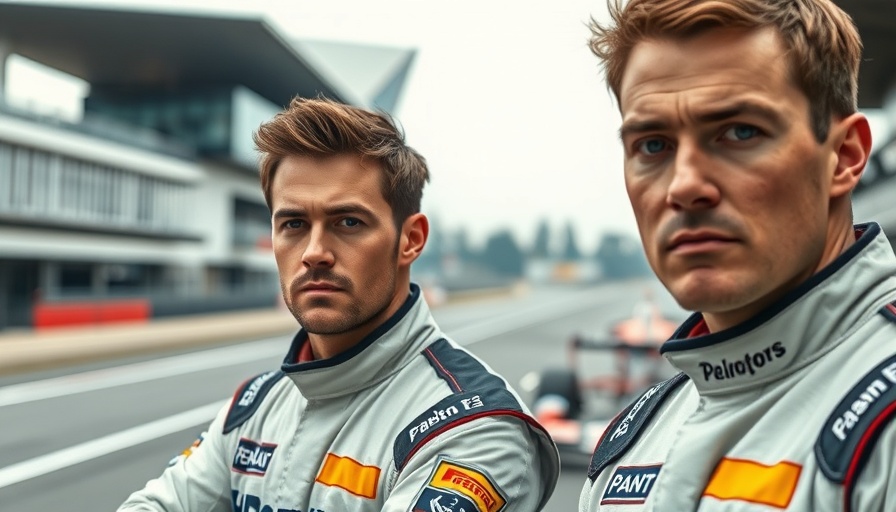
Racing into the Spotlight: The Intersection of Film and Formula 1
As the adrenaline-fueled world of Formula 1 racing continues to capture the limelight, Apple Original Films’ F1: The Movie emerges as a unique blend of speed, drama, and cinematic flair. Starring Brad Pitt, Javier Bardem, and Damon Idris, this film promises not only thrilling visuals but also an immersive experience that hearkens back to the golden days of racing. The innovative decision to weave real-time events into the narrative sets this movie apart from typical racing films, creating a captivating storyline that elevates it from mere fiction to a documentary-like presentation of the sport.
A Glimpse Behind the Scenes: Filming Among Giants
The production of F1: The Movie was not just about filming on closed sets; director Joseph Kosinski pushed boundaries by integrating the crew into the actual racing calendar. This allowed the filmmakers to capture genuine moments alongside the world's premier F1 drivers and teams. The crew became familiar faces in the paddocks, developing relationships with actual racers and gaining unprecedented access, which further enriches the film's authenticity.
Fusing Cinema and Authenticity: A New Breed of Racing Film
What distinguishes F1: The Movie from its predecessors is its dedication to realism. Licensed by Formula 1 itself, the movie features cameos from star drivers like Lewis Hamilton, showcasing the vibrancy of the sport. This combination of real actors and real drivers presents a tapestry that is both dramatic and factual, capturing the audience's imagination while staying true to the spirit of Formula 1 racing.
Cultural Significance: Formula 1's Resurgence in Popular Media
The symbiotic relationship between film and motorsport is becoming increasingly significant. With F1 gaining astronomical popularity in recent years and new fan bases emerging, F1: The Movie is poised to further drive interest in racing culture, potentially drawing in viewers unfamiliar with the sport. Its release in theaters and IMAX not only elevates its visual component but also reinforces the grand spectacle that is Formula 1.
Beyond the Track: Exploring Off-Stage Locations
As production designer Ben Munro reveals, the film traverses from grandeur to intimacy with locations ranging from a quaint pub in Bedfordshire to unassuming laundromats in Florida. The choice of settings reflects the diverse world of F1 fans and participants, showcasing the extensive cultural impact of racing, which goes beyond just the tracks.
What Lies Ahead: Predictions for the Future of Racing Films
With F1: The Movie paving the way, there is potential for a wave of future productions that embrace the authenticity of sports. Audiences are increasingly gravitating towards content that resonates with their experiences and immerses them in their passions. This trend could lead to more collaborations between professional sports leagues and film studios, establishing a new genre of sports cinema that seamlessly incorporates real-world elements into narratives.
The Emotional Impact: Racing, Cinema, and Connection
The film not only appeals to racing enthusiasts but also plays on the emotional cords of a broader audience. For those who dream of high-speed excitement or feel the allure of competition, F1: The Movie serves as a visual and emotional adrenaline rush that offers a taste of life within the sport.
In conclusion, F1: The Movie stands at the crossroads of entertainment and authenticity, reinvigorating interest in Formula 1 while appealing to both die-hard fans and newcomers alike. It invites audiences to experience the thrill of racing like never before, blurring the lines between cinema and reality. As the film sets for its release, it's clear that this cinematic endeavor is about much more than just racing; it's about the passion, the culture, and the emotions that drive the sport forward.
 Add Row
Add Row  Add
Add 




Write A Comment